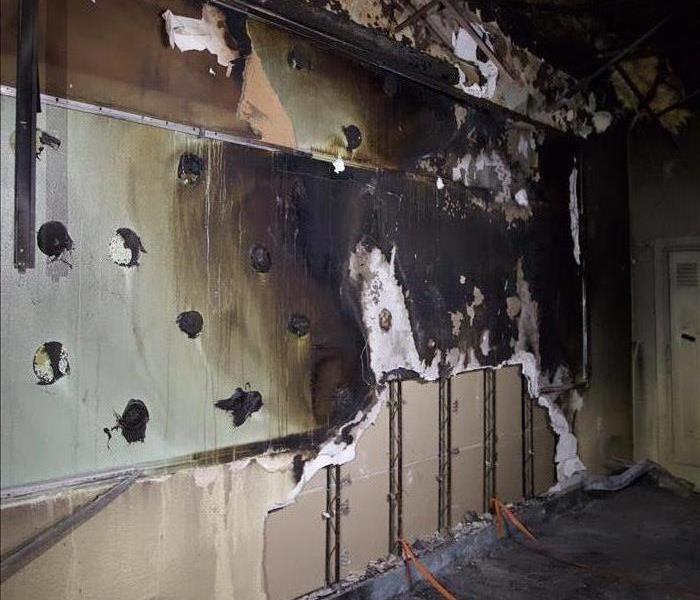Stay Prepared: Understanding Different Types of Fire Extinguishers and Their Uses
8/14/2024 (Permalink)
 In St. Louis, MO, where diverse types of buildings require tailored fire safety measures, understanding fire extinguishers is essential.
In St. Louis, MO, where diverse types of buildings require tailored fire safety measures, understanding fire extinguishers is essential.
Fire extinguishers are crucial tools for home safety, capable of preventing small fires from becoming catastrophic. However, not all fire extinguishers are created equal. Knowing the different types and how to use them can make a significant difference in an emergency. In St. Louis, MO, where diverse types of buildings require tailored fire safety measures, understanding fire extinguishers is essential.
Types of Fire Extinguishers
Class A Fire Extinguishers
Class A fire extinguishers are designed for ordinary combustibles such as wood, paper, cloth, and some plastics. These extinguishers use water, foam, or dry chemicals to smother the flames.
Class B Fire Extinguishers
Class B fire extinguishers are meant for flammable liquids like gasoline, oil, and grease. These extinguishers typically use carbon dioxide (CO2) or dry chemicals to effectively cut off the fire’s oxygen supply, thus extinguishing it.
Class C Fire Extinguishers
Class C fire extinguishers are used for electrical fires. These extinguishers use non-conductive agents like CO2 or dry chemicals to ensure that electricity is not conducted during the extinguishing process, preventing further hazards.
Class D Fire Extinguishers
Class D fire extinguishers are specialized for fires involving combustible metals such as magnesium, titanium, and sodium. These extinguishers use a dry powder that absorbs heat and prevents the fire from spreading.
Class K Fire Extinguishers
Class K fire extinguishers are designed for kitchen fires involving cooking oils and fats. They use a wet chemical agent that reacts with the fats to form a non-flammable soapy layer, effectively smothering the fire.
How to Use a Fire Extinguisher: The PASS Technique
Regardless of the type of fire extinguisher, the method for using them remains the same. Remember the acronym PASS:
- Pull the pin to break the tamper seal.
- Aim low, pointing the nozzle at the base of the fire.
- Squeeze the handle to release the extinguishing agent.
- Sweep from side to side at the base of the fire until it is extinguished.
Practicing this technique can make a significant difference in an emergency.
Choosing the Right Fire Extinguisher for Your Home
In St. Louis, MO, with its mix of residential and commercial properties, it’s essential to have the right type of fire extinguisher readily available. Assess the potential fire hazards in your home or business and choose extinguishers accordingly. For most households, a multi-purpose ABC extinguisher is a good choice as it covers Class A, B, and C fires.
SERVPRO®: Your Fire Safety Resource
SERVPRO is committed to helping you prepare for and respond to fire emergencies. Our team offers comprehensive fire damage restoration services and expert advice on fire prevention. Contact us today to learn more about how we can assist in safeguarding your home or business.
Understanding the different types of fire extinguishers and their proper use is a key component of fire safety. Equip your home with the appropriate fire extinguishers and ensure everyone knows how to use them. This knowledge can be crucial in protecting your property and loved ones from fire hazards.



 24/7 Emergency Service
24/7 Emergency Service